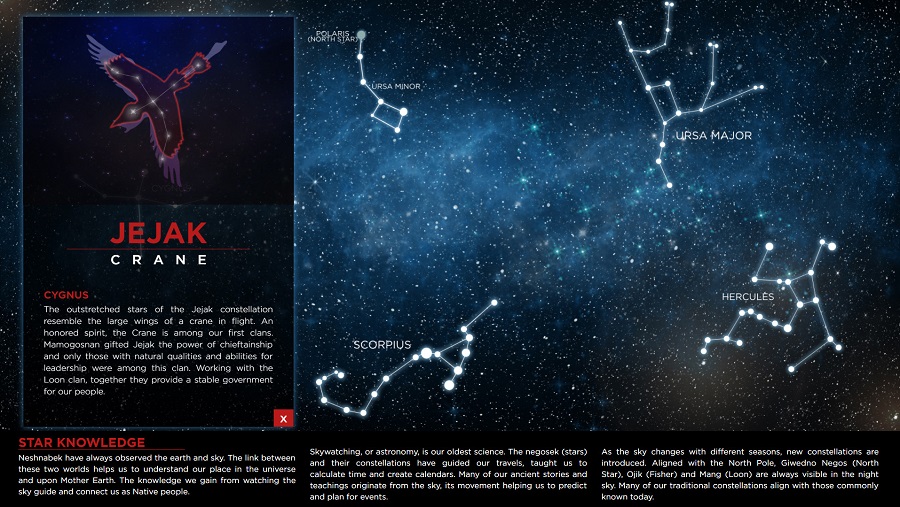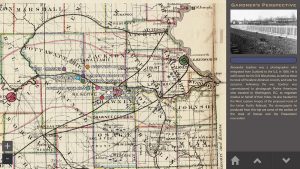
Staff at the Citizen Potawatomi Nation Cultural Heritage Center is using modern education techniques to captivate younger visitors touring the newly remodeled museum. While the renovations at the center aren’t complete, significant progress has been made toward making the exhibits interactive. Thanks to the CPN Information Technology department, all of the work has been done by tribal employees.
“We are discovering that our younger generations are used to learning with technology,” Mosteller said. “To go into a museum and have that stripped away can be jarring. They can lose interest, and it’s hard to connect. We wanted to make use of technology to tell our story fully.”
Along with technological advances in learning for the younger generations, another factor in creating digital interactives for the exhibits was a lack of square footage to display as many cultural items as possible.
To help transform CHC staff’s concepts into a working feature for visitors, they turned to CPN’s information technology department as the experts for everything digital at the tribe. Although it was their first time working with museum exhibits, director Linda Arredondo and her staff have gone beyond their usual duties to bring Potawatomi history and cultural teachings to life.
“We thought these ideas would be simple, but we are learning that making this a reality is more challenging than we thought,” Mosteller said. “We have to get creative, but here at the tribe, we are good at that because we frequently have limited funds when we work with grants. I’m proud of how resourceful we are with the talents we have at the Nation to complete this whole project with a reasonable budget and still be impressive and impactful.”
Along with Arredondo, web developer Nathan Hawkins and programmer Phillip Mustafin have been key players in the IT department. According to Mosteller, Hawkins has been hands-on and excellent at explaining why things work, or do not, in layman’s terms instead of IT jargon. Mustafin worked behind the scenes to make each project functional.
They work with curator Blake Norton, who builds the concepts; Trey DeLonais from the public information department, who has been instrumental in developing graphics; and CHC videographer Shawn Barfield, who animates the graphics into videos.
Although the process has been more complex than anticipated, Mosteller believes that what they’ve learned during the creation of the first exhibits will help the team with the next projects, which should be completed in January.
“The reality is that there will be hiccups and problems that come along that we never anticipated, but everyone has the same vision in the end that this is going to be an impressive exhibit,” Mosteller said. “It is going to make our people understand our history better, and I don’t think anyone has lost sight of that vision. It’s easy to get burned out, especially because it’s well over our normal job duties, so I’m thrilled at all the help they’ve given us.”
One of the first sections of the museum that used video was the exhibit highlighting oral traditions and stories that have been passed down for generations. Ten videos feature stories like The Great Flood, The Seven Grandfathers Teachings and The Origin Story.
“These stories need to be told audibly to help the listener create the imagery in their head,” Mosteller said. “Tribal members who visit the exhibits should be prepared to be challenged, develop a personal connection and really engage in their culture. They’ll be able to hear our history first-hand from the people who have lived through events and how it impacted the tribe.”

Visitors can interact with maps of the constellations, a Kansas reservation and the earliest CPN allotment land in present-day Pottawatomie County, Oklahoma. More digital interactives, including games, stories and videos will arrive before the planned grand reopening in 2018. Visit potawatomiheritage.com for updates.
